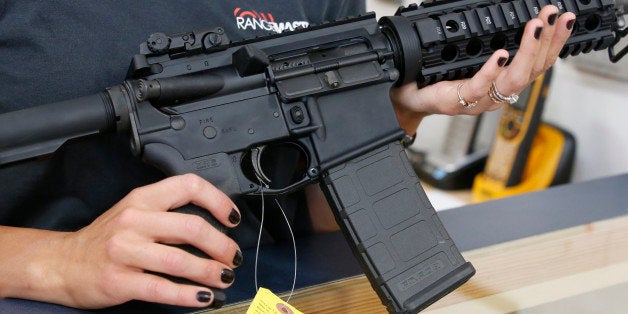
On Monday evening, the United States Senate failed to pass legislation that would have stopped suspected terrorists from purchasing firearms and required background checks on all private gun sales. These two common-sense reforms are non-controversial and supported by 92 percent and 85 percent of Americans, respectively. The fact that 60 votes could not be found to support either reform is shameful and a matter that will need to be rectified by Americans at the ballot box in November.
Despite this setback, the future of gun violence prevention in America is bright.
Facing intense pressure from the public, the Senate is already preparing for another round of votes on gun reform. And there is hope beyond the federal level, too.
In the wake of our nation's worst mass shooting ever, state lawmakers have a golden opportunity to enact a policy that cannot only prevent tragedies like the one we witnessed in Orlando, but also prevent firearm suicides: the Gun Violence Restraining Order (GVRO).
The GVRO process is similar to the domestic violence restraining order process and provides the opportunity to defuse a potentially dangerous situation before permanent harm is done. Under a GVRO policy, family members and/or law enforcement officials can petition a judge to have firearms temporarily removed from an individual in crisis for a period of one year. This would allow those who are a threat to themselves and/or others the time they need to get help and heal. Equally important, the GVRO allows for due process, as individuals are able to petition to get their firearms back following a brief period of time.
Following the mass shooting in Isla Vista, California became the first state in the country to enact a GVRO law in 2014. That law went into effect at the start of this year. Connecticut and Indiana have similar laws on the books that allow firearm removal in certain circumstances.
If Florida had a GVRO law, it might have stopped the Orlando shooter.
Research shows that the strongest indicator for potential future violence is a history of violent behavior, and the Orlando gunman (like many mass shooters before him) had such a history.
The Orlando gunman's ex-wife described her short-term marriage to him as marred by domestic abuse, stating that, "He would just come home and start beating me up because the laundry wasn't finished." Her family eventually came to Florida to physically remove her from his presence. Additionally, the gunman's coworkers noted that he frequently made homophobic, racist and sexist comments. "He said he was going to kill a whole bunch of people," recalled a private security guard that worked with him. The gunman also told his wife about his planned shooting rampage. Finally, the Orlando shooter had been investigated on two different occasions by the FBI for potential ties to terrorists.
All of the warning signs were there, but there was no opportunity under Florida law for the gunman's family members or the law enforcement officials who were investigating him to intervene and initiate some type of firearm removal process. So he was able to maintain possession of his military-style assault rifle and the handgun he used to kill 49 and injure 53.
The early data on Connecticut's firearms removal process shows that it has enormous promise. Duke professor Jeffrey Swanson recently gave a presentation at the American Psychiatric Association's annual convention in which he reported that Connecticut's law is preventing suicides. The data also shows that many of the individuals whose guns were removed were able to seek and receive mental health treatment that they desperately needed.
My organization, the Coalition to Stop Gun Violence, has worked with stakeholders across the country to promote the GVRO at the state level. Law enforcement officials are very interested in the GVRO because they frequently respond to 911 calls where they can see a crisis coming, but are unable to act to remove firearms from the situation. GVRO legislation has either been introduced, or is expected to be introduced next legislative session, in more than a dozen states.
The Senate will take up "compromise" gun legislation introduced by Senator Susan Collins (R-ME) before the end of the week to address the "Terror Gap," and I hope for a fruitful outcome. But regardless of how that voting goes, there is still ample opportunity to save lives by working to enact GVRO policies at the state level. I would encourage all HuffPost readers to contact your state legislators and ask them the following: "Is your chamber considering a GVRO bill? If not, when will you be introducing one?"
___________________
If you -- or someone you know -- need help, please call 1-800-273-8255 for the National Suicide Prevention Lifeline. If you are outside of the U.S., please visit the International Association for Suicide Prevention for a database of international resources.
Also on HuffPost:
